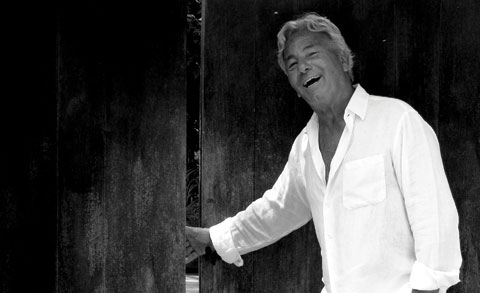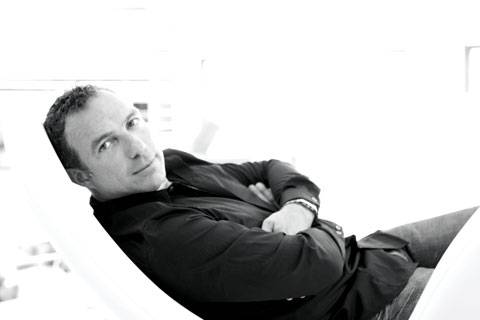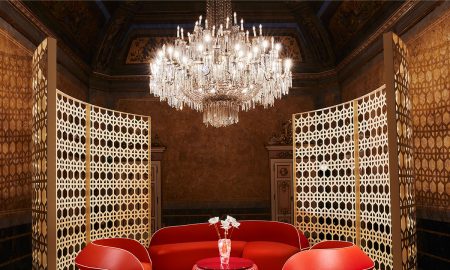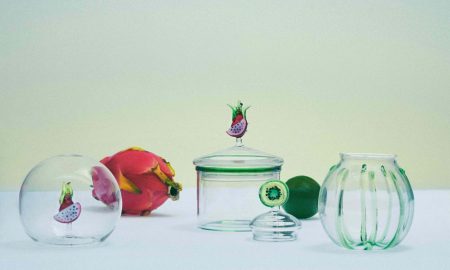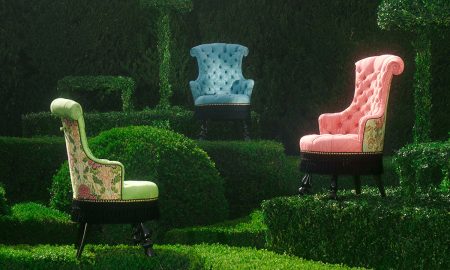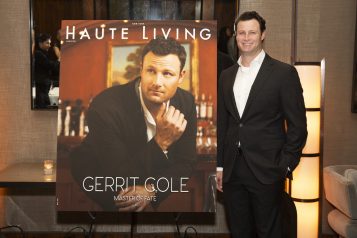Ricardo Urgell’s favored home: tiny and chic Ibiza
By Sonia Tita Puopolo
Photography by Diego Portuondo
“The changes we see today are very attractive and Ibiza is not only for the international glamorous jet set but also, a refuge for all hedonists and true lovers of nature.”
Ibiza, the small Balearic island off the eastern coast of Spain, attracts an international A-list roster of visitors: from presidents to rock stars to artists to global business leaders. Recently, I sat down with one of the island’s living icons– Ricardo Urgell, the founder and creator of the Pacha brand and the world’s leading club developer. I learned that there is a lot more to this man than you’d think. He’s not just about nightlife and frivolity, despite presiding over an empire of refined luxury and pleasure. Instead, he embodies the complex spirit of Ibiza in its entirety.
Urgell’s Ibiza home, Can Planells, is located close to the town of Santa Gertrudis and is just one of his seventeen residences worldwide. Established in 1740, the property includes five separate beautiful homes, allowing ample space for his three children when they visit the island. You’ll see on the following pages the beauty of his ‘finca,’ in both its exterior and interior spaces. Can Planells is also a functioning farm with its own fruit, vegetables, and livestock.
Urgell’s interest in Ibiza derives from his being a close watcher of the tourism industry as it transformed his homeland. “I was inspired by post-war Spain,” he explains. “Tourism did not exist and the country was very poor. The changes we see today are very attractive and Ibiza is not only for the international glamorous jet set but also, a refuge for all hedonists and true lovers of nature.”
Ibiza was founded in 654 BC by the Phoenicians and quickly became a center of the worldwide trade in ‘white gold,’ now commonly known as salt. Thought to be blessed by the gods, Ibiza was crucial to Phoenician culture, serving as the society’s main burial ground. Other empires– among them Roman, Byzantine, and Arab– have been drawn to the island over the centuries, and their influence can be seen and felt still today. From its architecture to its restaurants to its clubs to its ‘Al Dib’ fashion, Ibiza is an international melting pot and the source of inspiration for artists in every field. Ricardo Urgell has devoted his life into bringing all of these creative and dynamic elements together under one name: his brand Pacha. Whether it’s his nightclubs, restaurants, or his hotels (his ‘El Hotel’ will soon be a chain including 25,000 rooms), or his clothing line or record label, Urgell knows how to create spaces and draw crowds in celebration of life.
Dance is a key element in Urqell’s world-view. As he writes in his book, El Baile, published in celebration of Pacha’s 25th year, “Since man exists, dancing exists. People danced to drive away bad spirits, people danced for the rain to come, people danced to fertilize the crops, people danced before a battle, a wedding, or a party.” Pacha began with this concept. Urgell explains that his first establishment, called Tito’s, was located in Sitges, a seaside resort on the coast of Spain near Barcelona, and was known for its spirited dancing.
After the success of Tito’s, Urgell started the first Pacha club in 1967 (also in Sitges) and opened an Ibiza outpost in 1972. Today, Pacha exists in cities worldwide, including New York, London, Munich, St. Petersburg, Marakesh, Sao Paulo, and Buenos Aires. Soon, Pacha will open in Dubai, Kuwait, Miami and Las Vegas, with many more to come. Urqell’s drive to have an international brand inspires him to continually expand his business. “I want [my] children to continue [my] legacy and continue to grow and expand the Pacha brand,” he says.
In recognition of his contribution to the culture of Ibiza, in 2004 Urgell was the first entertainment mastermind to be awarded a gold medal of tourism by the Spanish government. Illustrating his following and influence in his native land, Ford Motors ieven named a car model in Spain after his Pacha brand.
What draws people to Ibiza? Urgell thinks it’s “the desire to celebrate life.” The sweetness and freshness of life are symbolized by the two cherries that represent the Pacha brand. Urgell choose the two cherries in keeping with his tradition of naming his companies after fruits; he says he loves the brand’s logo for its simplicity and freshness.
Currently in the works is Pacha’s new ‘El Hotel’ chain, an ambitious undertaking that will encompass 25,000 rooms throughout the world aimed at young people who appreciate, and can afford, exclusivity. Guests will be able to choose from exquisitely designed minimalist-style suites and enjoy spas, beautifully landscaped gardens, and, of course, the enigmatic and enchanting Pacha atmosphere.
Urgell’s grandfather and great-grandfather were important painters in their time; their work is still found in museums and auction houses. As a lover of art Urgell has organized exhibitions for young talent at El Hotel, and as the chain expands, it will maintain this tradition and expose artists from all over the world.
His growing worldwide empire notwithstanding, Urgell’s favorite place is still Ibiza, which he describes as “magical,” with a “naturaleza” not quite found anywhere else in the world. His love of nature has driven him to spearhead efforts to maintain Ibiza’s beaches and plant 1,000 palm trees all over the island.
As Urgell puts it, “there is some sort of special force that attracts and invites people to Ibiza.” Furthermore, he says, “Ibiza can transform people.” It is no surprise, then, that Ibiza boasts the highest concentration of international talent. Ibiza’s magnetism is not only figurative, but literal: supposedly it’s the third most magnetic place on earth– specifically at the point of the island called Es Vedra.
What is next for Urgell? He says he intends to “enjoy nature more and more.” For those who know him, his passion and respect for nature and the dance of life is abundantly clear. He has created a model for cultured life with no equal, leaving a mark for all generations to come.







